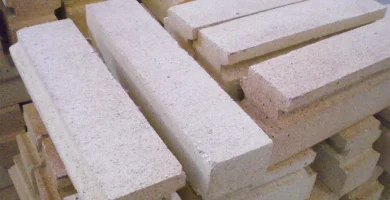 What Are Refractories Made Of? Find Out More About Silica Here!
What Are Refractories Made Of? Find Out More About Silica Here!In a previous article, we discussed one of the raw materials of fire bricks, which is alumina.
Another main component of fire bricks is silica. Therefore, fire bricks are also called aluminosilicate bricks.
So, what is silica and why is it one of the main raw materials not only for fire bricks but also for most other refractory materials?
What is silica?
Silica is one of the aggregate raw materials for refractory such as fire bricks, mortars, and others.
Having a chemical formula of SiO2, silica is a raw material that is easily obtained and therefore, inexpensive.
Where is silica obtained from?
There are two natural sources of silica, which are quartz and diatomaceous soil that has been calcined.
Natural quartz sand or silica sand comes from the beach, sand clay, or crushed sandstone.
Diatomaceous soil contains silica shells from diatoms (a type of single-celled algae).
Why is silica a raw material for refractory?
Silica is one of the main raw materials for refractory because it is easily obtained and has insulating properties or can withstand heat.
Where can you buy silica-containing refractory bricks in Surabaya?
Loka Refractories, one of the Surabaya refractory brick manufacturers, provides fire bricks containing silica.
We are ready to fulfill the demand for fire bricks produced from raw materials with guaranteed quality.
Do you have any questions about our products? Contact us:
Phone: 031-7663307
WhatsApp: 082142808900
E-mail: info@lokarefractories.com
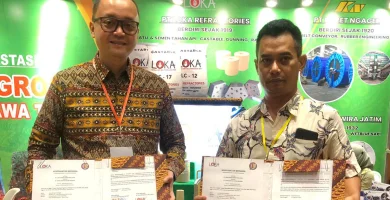 Loka Refractories on Misi Dagang Jatim, Fulfill Refractory Needs in West Nusa Tenggara
Loka Refractories on Misi Dagang Jatim, Fulfill Refractory Needs in West Nusa Tenggara"Misi Dagang Jawa Timur" was carried out in the City of Mataram on Monday, February 27th 2023 to be precise at Lombok Raya Hotel.
This time, "Misi Dagang Jawa Timur" with the theme "Increasing Connectivity Networks" are attended by the Governor and high-ranking officials of the provincial governments of East Java and West Nusa Tenggara.
On this occasion, Loka Refractories signed an MoU with PT. Detra Adiyasa Putra Mandiri as partner.
The signing of this document marks the beginning of the collaboration between PT. East Java Wira Refractory Workshop with PT. Detra Adiyasa Putra Mandiri in developing the refractory business in West Nusa Tenggara province.
It is hoped that with the signing of the MoU document PT. The Wira Jatim Refractory Workshop can meet the demand for refractory materials in the area.
Source: West Nusa Tenggara Province Trade Office
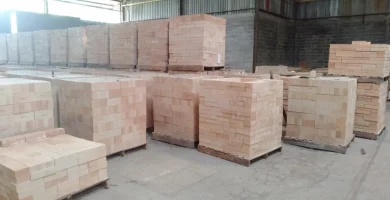 Main Chemical Components of Refractory Bricks: Alumina
Main Chemical Components of Refractory Bricks: AluminaLoka Refractories - You must be familiar with fire bricks or fire clay bricks right? Refractory bricks consist of many components in their raw materials.
However, the main components are alumina and silica. In this article, we will discuss about alumina.
What is alumina? Why is the chemical component alumina used in the manufacture of refractory materials, one of which is refractory brick? Check out the following explanation!
What is alumina?
Alumina is a chemical compound with the chemical formula Al2O3, which is composed of aluminum and oxygen. Not only in the refractory industry, alumina is also widely used in the ceramics and glass industries.
Where does alumina come from?
The natural alumina component is obtained from bauxite, a material in the form of sedimentary rock. In Indonesia, several bauxite producing regions are Sumatra, Riau and Kalimantan.
Bauxite will be processed into calcined alumina which is artificial alumina through the bayer process. Not only calcined alumina, artificial alumina includes fused alumina and tabular alumina.
Why does alumina used for fire bricks?
Not only refractory, alumina is a component of most refractory materials. Why? Because alumina has a high melting point, is a good heat insulator, and withstands high temperature stress.
How to get alumina fire bricks?
Loka Refractories provides refractory bricks with various levels of alumina! Those with high alumina content include SK-36 and SK-38 high alumina bricks. Get high alumina refractory bricks at special prices now!
Contact Us!
LOKA REFRACTORIES
Phone: 031-7663307
Whatsapp : 082142808900
E-mail :info@lokarefractories.com
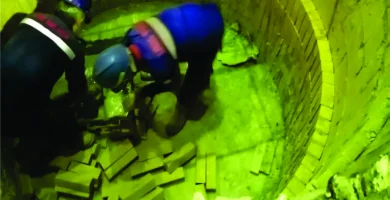 6 Industries that Require Refractory Materials
6 Industries that Require Refractory MaterialsLoka Refractories - Did you know that refractory materials contribute to our daily lives?
Refractory materials actually have a big role in the existence of things we need everyday such as fuel, vehicles, electricity, shelter, and many more.
That's what makes refractory materials the foundation of the following industries. Want to know more about it? Check out the explanation below!
6 Industries that Require Refractory Materials
1. Smelters
Smelter is an industry that processes mining products so that the metal content increases. Smelter itself comes from the word smelting, namely the separation of pure metal from metal ore.
The process of separating pure metals from metal ores requires very high temperatures. This is where refractory materials come into play.
2. Cement industry
In the cement industry, refractory materials have a role as a protector of the steel shell and kiln shell from hot material, gas temperature, and abrasion.
In addition, the refractory plays a role in controlling the flow of material through the kiln. Refractory materials that are alkaline are often used by this industry.
3. Iron and steel industry
Various kinds of refractories are required in the production of iron and steel to operate the furnace.
Refractory materials are usually applied to the backup zone and working interface of the furnace according to their functions, including molding, mixing, transferring hot molten metal, molten steel and slag.
4. Glass and ceramics industry
Glass and ceramics are produced through a combustion process using a kiln/furnace oven.
Refractory material is a crucial component of the oven. The use of refractory materials plays a role in perfect combustion so as to produce quality products.
5. Chemical and gas industry
The chemical and gas industry involves very high heat and pressure energy, so a refractory material is needed.
Refractory materials with high alumina and insulation are needed in reformers, furnaces, reactors, burners, and many more.
6. Aluminum industry
The aluminum production process requires very high temperatures, such as in the refining and melting processes.
Various kinds of refractory materials are commonly applied to ladles and furnaces depending on the process. Industries that require refractory materials are not limited to those listed above.
There are still many other industries with various scales that require refractories.
For the sake of your industries, it is necessary to use good quality materials because refractory failure can cause substantial losses.
Want to get quality refractory material? Call us now!
LOKA REFRACTORIES
E-mail: info@lokarefractories.com
Telp : (031)7663307, 0821-4280-8500
 Celebrating their 104th Anniversary, Loka Refractories is Ready to Tread the Challenges of a New Era
Celebrating their 104th Anniversary, Loka Refractories is Ready to Tread the Challenges of a New EraWe commemorate this happy day in an event which was attended by representatives of PT. PWU Jatim, subsidiary representatives of PT. PWU East Java, the board of commissioners, directors AND all employees of Loka Refractories.
The event began with remarks from Loka Refractories' Director and Main Commissioner, and Director of PT. PWU Jawa Timur.
Then the event continued with the crowning of the best employee of 2022 who was chosen by all employees of Loka Refactories.
As a form of gratitude to the Almighty God, the Director of PT. Refractories Workshop cut a tumpeng that was given to the best employee as a form of appreciation for their performance throughout 2022.
After cutting the tumpeng, a small donation was also given to orphans.
Loka Refractories' anniversary ended with spiritual cleansing and prayer readings led by the Commissioner of PT. Refractories Workshop.
Thank you for all the support during our 104 years journey. In the future, we will rise to the challenges of the new era with continuous innovation based on shared strength and the spirit of kinship.
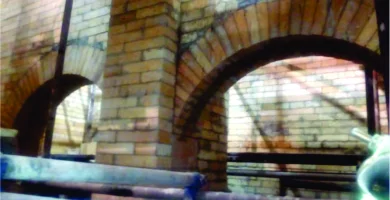 Tips for Choosing the Right Refractory Product: The Importance of Specifications Compliance
Tips for Choosing the Right Refractory Product: The Importance of Specifications ComplianceSo, how do you choose the right product?
Here are some tips for choosing the right refractory product for your industry. Scroll down now!
Tips for Choosing the Right Refractory Product
1. Adjust material specifications with the type of furnace and its application
Every industry that needs refractory materials operates a variety of furnaces with different functions.
They definitely need materials with different specifications and application methods too, right?
Therefore determining the appropriate specifications for refractory products is very important in order to avoid various damage problems such as failure, cracks, and so on.
The most common failure of refractory product applications is caused by slag attack. Therefore, it is necessary to pay attention to the specification of the slag resistance of the material.
In addition to slag resistance, it is also important to pay attention to other mechanical and technical specifications such as:
- Operating temperature not to be above the service limit so as not to weaken the material or melt it.
- Chemical suitability of the furnace environment.
- Resistance to high temperature loads so they won't collapse.
- Resistance to abrasion and mechanical impact.
- Minimum heat loss and maximum heat conservation to prevent the heat to come out from the furnace.
Various problems due to choosing the wrong product will only add to the cost and effort. Besides that, it can also hinder the maintenance of the industry.
2. Perform the aging of refractory products
Considering the product life of a refractory material can determine the timing and cost of maintenance and repairs.
3. Consult first
If you have not been able to determine the most suitable refractory products, it is highly recommended to consult with an expert first.
That way you will get a product with the best specifications.
4. Choose quality products from the Refractory Shop
You certainly want a refractory product with the best specifications and longevity, right?
Loka Refractories is ready to meet the needs of high quality refractory materials for your industry!
Call us now! We are ready to answer all your questions.
E-mail : info@lokarefractories.com
Phone : 031-7663307
Whatsapp : 0821-4280-8500


